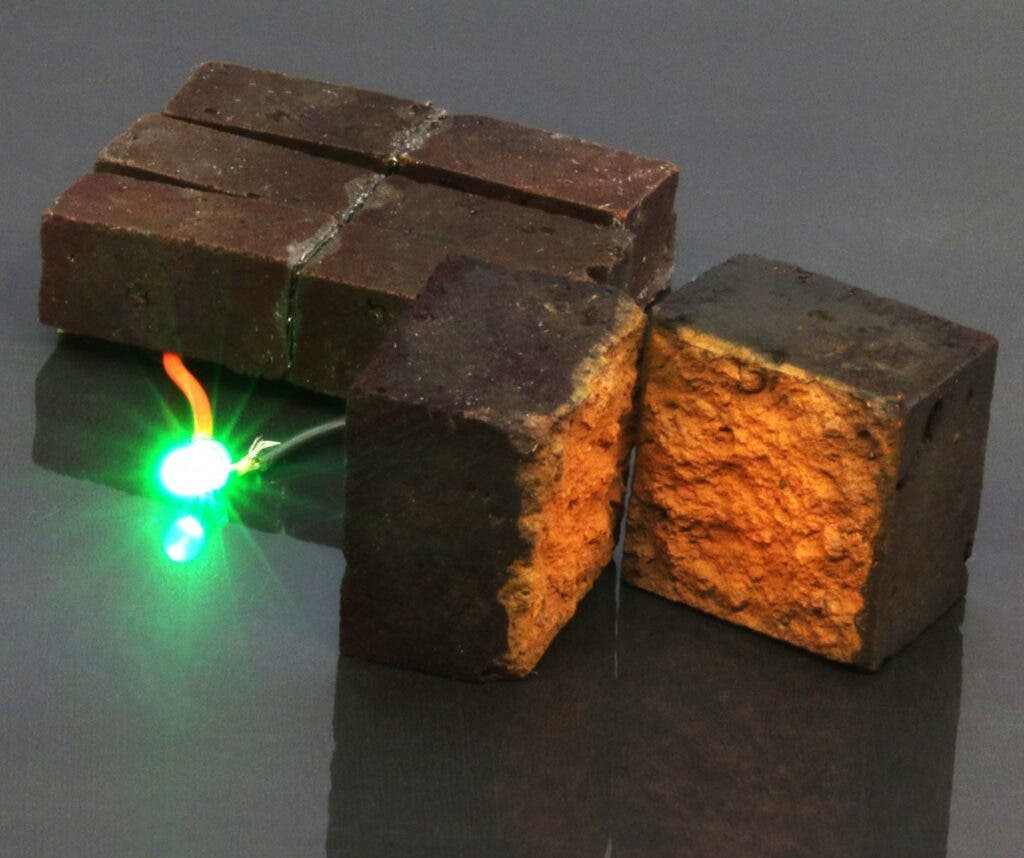
Red bricks have been the building material of choice for centuries. They’re cheap, great thermal insulators, and add a quaint look to neighborhoods. But that’s not all — imagine plugging your mobile device straight into your brick house to charge it. Researchers at the University of St. Louis showed that such a scenario is possible, converting red bricks — and by extension your entire house — into batteries for energy storage.
Julio D’Arcy, an assistant professor of chemistry at Washington University in St. Louis, previously published a number of papers showing plastics can be used to store energy when they can conduct electricity.
“They are a lot of fun – we also have record breaking devices that can be cycled 350,000 times using our plastics and which continue to put out energy. Using a brick was a natural evolution for us because its pigment is basically a form of iron corrosion which we have used in the past and which we knew we could tailor to our advantage to produce an even better electrically conducting plastic,” D’Arcy told ZME Science.
To essentially turn plastics into supercapacitors, D’Arcy and colleagues employed iron corrosion in chemical syntheses. In their new study, the researchers worked somewhat in reverse. Instead of adding iron corrosion to plastic, they put a coat of polymers onto red bricks, whose pigments contain iron oxides.
The conductive plastic coating developed by the researchers, known as PEDOT, is composed of nanofibers that percolate through the inner porous networks of the bricks, serving as ion sponges that can both store and conduct electricity. Alas, the process also turns the bricks blue instead of red.
“We do this by flowing gases that react with the red pigment. A brick, when coated by our polymers, behaves like a semiconductor because the polymer coating is responsible for this behavior. We have in essence converted an inert and stable construction material into a semiconductor. When you apply a potential to our polymer, it experiences this potential and retains it (this can be achieved using a solar cell that is connected to a polymer-coated wall). Connecting two polymer bricks together allows us to develop a positive potential on one brick and a negative on the other thereby creating a two-electrode system that can store electricity when these bricks are sandwiched together, this is similar to stacking bricks on a wall except the stacking here enables the flow of electricity between bricks,” D’Arcy explained.
But although this sounds straightforward, the researchers had to overcome a number of challenges. To penetrate the brick to its pores and initiate the chemical reaction that applies the polymer, a specific flow rate for the gases is required. The researchers carried out no fewer than 1,000 syntheses before finding a process that works best to convert bricks into batteries.
This all works with both regular and recycled bricks. In fact, the researchers used off the shelf bricks bought at Home Depot in Missouri, with each brick costing no more than 65 cents.
Does this all mean you could turn your brick walls into a home-sized battery? Indeed, that’s something that might be possible in the future. Solar panels on the roof could generate energy during the day, while the bricks would power the home during the night. According to D’Arcy, an averaged-sized American house could store up to 300Wh of energy.
“Our bricks have an energy density that is 2 orders of magnitude lower than a lithium-ion battery. However, our bricks do not catch on fire because they use water in the device and also our device can be recharged 10,000 times!” D’Arcy explained.
There are quite a few practical challenges that need to be overcome before polymer-coated bricks become a thing. For now, the researchers are focused on improving the energy density.
“We are actively working on increasing the amount of energy that can be stored in our bricks – when we increase the energy density by one order of magnitude, we would like to power mobile devices. We believe that we are close to this goal because current findings in our lab show promising results,” D’Arcy concluded.
The findings were described in the journal Nature Communications.






